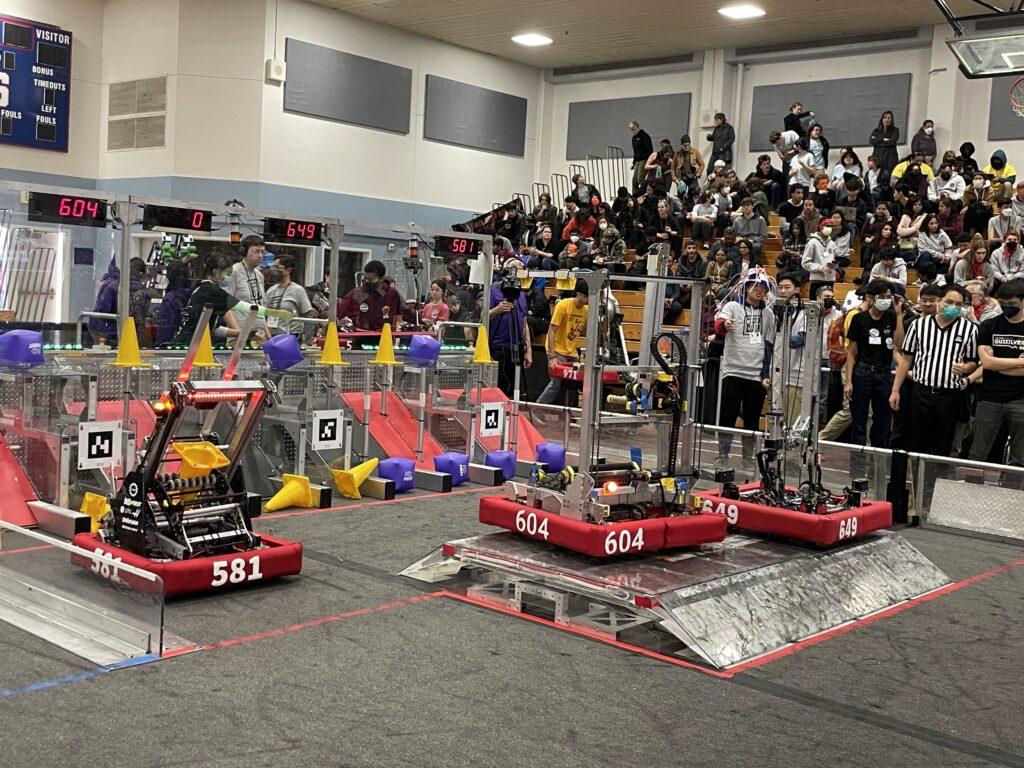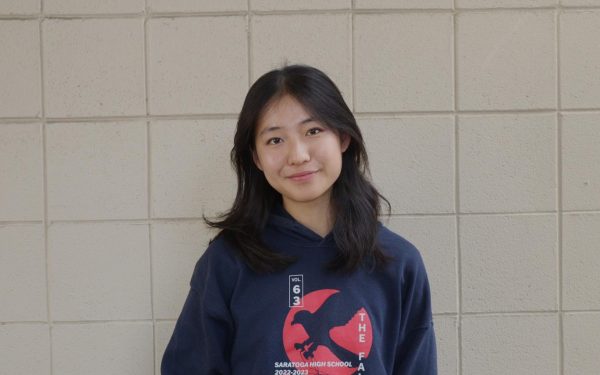MSET Robotics team was eliminated in the third round of playoffs by just one point at the San Francisco Regional held from March 16-19, falling short of qualifying for their goal of the world competition. They were seeded 9th heading into competitive rounds.
Junior outreach lead Cameron Nguyen was also nominated as Dean’s List Finalist, an award for leadership in both community outreach and technical subsystems. Forty-two teams competed in the tournament, and only five advanced to worlds, three through robot games and two through outreach initiatives.
Since January, the 60-member team has been working on their robot in preparation for this first competition. Within the allotted 10 weeks, the team designed, prototyped, manufactured, programmed, wired and tested their robot. However, the team was met with a tough schedule: An abnormally high number of adult mentors were unavailable, leading to a backlogging the robot parts that needed to be manufactured and pushing back the robot assembly, electronics wiring and software testing.
“We did the basic wiring over about a week, but because everything was on a time crunch due to delayed manufacturing and a lot of pressure from software to finish, we were limited on working hours,” sophomore electronics member Sameera Kapur said.
Nevertheless, the electronics team was able to finish and hand the robot off to the software team which rushed to test autonomous actions, driving and other essential robot functionalities.
In competition, the team encountered their fair share of problems, primarily on Friday, the day of their practice matches. The robot aims to pick up cube and cone pieces to place on heightened platforms on the field. However, starting with an unusually slow drivebase and unexpected difficulty picking up scoring elements, the team had to clamor to make all the necessary code changes. In-match, the claw, the mechanism used to pick up game pieces, was damaged — but in a dramatic improvement from last year’s season, the hardware and electronics subsystems remained relatively robust.
“This year, we focused on optimizing each part for strength while keeping it low weight, such as our long arm tubes, which were partially-pocketed [a process in which metal is removed to form a depression] to keep strength whilst cutting weight in the process, and prioritized mechanisms that would not need to extend outside the bumpers,” hardware lead junior Naveed Kasnavi said.
In addition, the hardware team designed their mechanisms to be easily replaceable to make fixes simpler. Each mechanism can be taken off the robot simply by removing a few well-placed, easily-accessible screws.
In the end, despite the team’s efforts, they were eliminated in the third round of playoffs and failed to win any other awards that would have also qualified them for the World Championships. Nguyen, on the other hand, was individually recognized and will be entered as Dean’s List Finalist against other regional finalists at World Championships to compete for one of ten spots as Dean’s List recipient.
This is a disappointment in comparison to last year, where M-SET qualified for the World’s Championship via an outreach award, and former member senior Druthi Palle won Dean’s List recipient.
Before their next competition, the Silicon Valley Regional in San Jose from April 5-8, the team will be improving their robot in all subsystems: Electronics will be working at replacing WAGO connectors and two LED controllers, hardware will be adding an intake that picks up from the ground and raising bumpers and software will improving their autonomous actions, programming the new ground intake and fixing errors in LED display.
“A ground intake and other optimizations will add up and significantly reduce our cycle times, so I’m confident that we will rank high at SVR despite the much harder competition,” Kasnavi said.




























